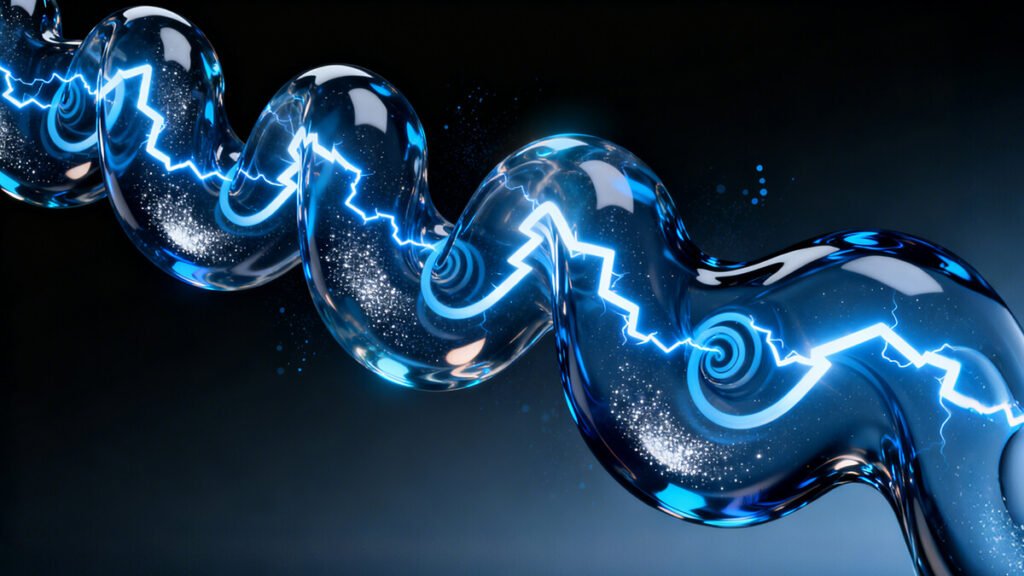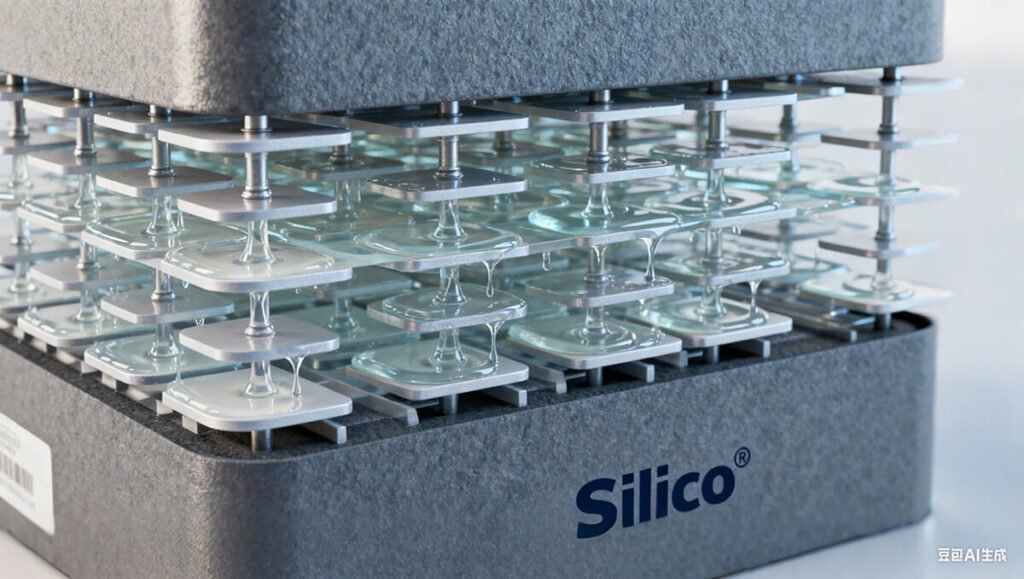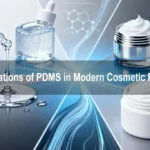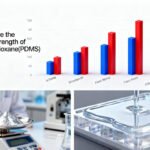How to Choose Silicone Oil for Electrical & Dielectric Insulation
- Blog
- January 3, 2023
- 3:35 pm
Learn how to correctly choose high-performance electronic and electrical insulating silicone fluids. This guide explains key properties such as dielectric strength, thermal stability, and viscosity, helping engineers select the most suitable Silico®silicone fluid for insulation, heat dissipation, and high-voltage applications.
Table of Contents
- 1. Introduction: The Role of Silicone Oil in Electrical & Dielectric Insulation
- 2. Core Material Properties & Advantages
- 3. Common Silicone Oil Types and Application Scenarios
- 4. Critical Selection Parameters for Electrical & Thermal Use
- 5. Standards and Regulation Guidance
- 6. Laboratory & Field Test Matrix
- 7. Decision-Making Process for Engineers
- 8. Procurement & Acceptance Checklist
- 9. Conclusion & Quick Reference Table
- 10. Frequently Asked Questions (FAQ)
1. Introduction: The Role of Silicone Oil in Electrical & Dielectric Insulation
In advanced electrical and electronic systems—such as high-voltage transformers, power modules, EV battery packs, and thermal control assemblies—silicone fluid (also known as silicone oil) serves as a reliable medium for electrical insulation and dielectric heat dissipation.
Its excellent dielectric strength, low dissipation factor, and thermal stability make it a superior choice to conventional mineral or ester-based fluids.
As a leading silicone materials innovator, Silico® offers a full range of dielectric silicone oils engineered for critical insulation and cooling applications, ensuring both system safety and long-term reliability.
Selecting the right silicone fluid is essential to maintaining stable performance, minimizing electrical losses, and ensuring consistent operation under extreme temperature or voltage conditions.
2. Core Material Properties & Advantages
- High Dielectric Strength: Silicone oils maintain insulation integrity even under strong electrical fields, reducing the risk of partial discharge or dielectric breakdown.
- Stable Dielectric Constant & Low Dissipation Factor: Typical permittivity ranges from 2.6 – 2.8, with tan δ values < 0.001 at 25 °C, ensuring minimal power loss.
- Wide Operating Temperature Range: Reliable from − 50 °C up to 200 °C+, with low volatility and consistent viscosity behavior.
- Excellent Thermal Stability: Resistant to oxidation and chemical degradation, even in oxygen-rich or high-voltage environments.
- Dual Functionality – Insulation & Cooling: Unlike most insulating liquids, silicone oils combine dielectric protection with effective heat transfer, enabling integrated cooling and electrical insulation.
- Material Compatibility: Chemically inert and compatible with metals, elastomers, and plastics, preventing corrosion or seal swelling.
3. Common Silicone Oil Types and Application Scenarios
Types of Silicone Oil:
- Standard Polydimethylsiloxane (PDMS): The most common base fluid, offering a balance of insulation performance and cost-efficiency.
- Methyl-Phenyl Modified Silicone Oil: Provides higher dielectric strength and improved high-temperature resistance.
- Specialty Heat-Transfer Silicone Fluids: Optimized for active cooling loops in power converters, EV modules, and laser cooling systems.
Application Scenarios:
- Transformers & High-Voltage Apparatus: Replace mineral oils for enhanced dielectric reliability and reduced fire risk.
- Power Electronics & Thermal Modules: Act as both dielectric coolant and thermal interface medium in compact systems.
- Optoelectronic Devices: Used for potting, encapsulation, and optical coupling in sensors and LED modules.
- Circulating Thermal Systems: Ideal for electric vehicle batteries, rectifiers, and capacitor banks where insulation and cooling are both required.
4. Critical Selection Parameters for Electrical & Thermal Use
| Parameter | Why It Matters | Typical Range / Value |
|---|---|---|
| Dielectric Breakdown Voltage (BDV) | Measures maximum electric field tolerance before insulation failure. | ≥ 18 kV/mm (Silico® dielectric series) |
| Dielectric Constant (εr) | Influences energy storage capacity; lower values mean less capacitive loss. | 2.6 – 2.8 |
| Dissipation Factor (tan δ) | Indicates energy loss during alternating fields; lower is better. | < 0.001 |
| Viscosity / Viscosity–Temperature Curve | Affects cooling performance and circulation efficiency. | 50 – 1000 cSt @ 25 °C |
| Thermal Conductivity | Determines the rate of heat dissipation in power systems. | Typically 0.15 – 0.2 W/m·K |
| Thermal Stability / Volatility | Ensures long service life and safety under continuous high temperatures. | Weight loss < 1 % at 200 °C / 24 h |
| Water Content | Moisture reduces BDV; strict control is essential. | < 50 ppm |
| Compatibility & Aging Resistance | Ensures no chemical attack or hardening during long-term service. | Passes 1000 h @ 150 °C aging test |
By specifying these parameters during procurement, engineers can select the optimal silicone oil for their insulation and cooling system design.
5. Standards and Regulation Guidance
- IEC 60836:2015 — Silicone liquids for electrical apparatus and insulation systems.
- ASTM D1816 / D877 / IEC 60156 — Dielectric breakdown voltage test methods.
- ASTM D445 — Viscosity measurement for insulating liquids.
- ISO 9001 / ISO 14001 — Recommended quality system certifications for suppliers.


6. Laboratory & Field Test Matrix
Pre-installation Laboratory Tests:
- Dielectric Breakdown Voltage (IEC 60156)
- Dielectric Constant & Dissipation Factor vs. Temperature
- Viscosity–Temperature Profile (ASTM D445)
- Thermal Stability (Thermogravimetric Analysis, TGA)
- Water Content (Karl Fischer)
- Material Compatibility (Immersion Test at Elevated Temperature)
Field Performance Tests:
- In-service BDV and tan δ measurement
- Thermal conductivity validation under operational load
- Regular sampling: viscosity, moisture, contamination, oxidation index
Implementing this test matrix ensures electrical reliability and maintains long-term insulation performance in real-world operation.
7. Decision-Making Process for Engineers
- Define System Requirements: Voltage rating, temperature limits, flow dynamics, and thermal load.
- Set Performance Targets: BDV, tan δ, viscosity range, and expected lifespan.
- Compare Manufacturers: Evaluate TDS and benchmark Silico® dielectric silicone oils against alternatives.
- Conduct Bench Trials: Simulate real-world operating temperature and electrical stress.
- Specify Acceptance Criteria: Include BDV minimums, viscosity tolerances, and contamination limits.
- Audit Supplier Quality: Confirm production traceability, purity level, and certification compliance.
- Implement Monitoring Plan: Conduct periodic oil sampling to ensure stable dielectric and thermal characteristics.
8. Procurement & Acceptance Checklist
- Obtain TDS, CoA, and MSDS for each batch.
- Ensure BDV ≥ specified value; verify with independent testing.
- Confirm viscosity and water content are within contract limits.
- Check label traceability: batch number, production date, shelf life.
- Perform on-arrival sampling for BDV and moisture validation.
- Maintain maintenance records for long-term fluid monitoring.


9. Conclusion & Quick Reference Table
Conclusion:
Selecting the correct dielectric silicone oil requires balancing electrical insulation strength, dielectric stability, thermal conductivity, and material compatibility.
Silico® dielectric fluids deliver long-term reliability and superior dielectric performance, making them ideal for modern high-voltage and thermal management applications.
| Application Requirement | Key Fluid Property | Typical Specification |
|---|---|---|
| High-voltage insulation | Dielectric Breakdown Voltage (BDV) | ≥ 18 kV/mm |
| Efficient thermal cooling | Viscosity & Conductivity | 50 – 1000 cSt @ 25 °C; 0.15 – 0.2 W/m·K |
| Long-term reliability | Thermal Stability & Oxidation Resistance | Weight loss < 1 % at 200 °C / 24 h |
| Safety & purity | Water Content | < 50 ppm |
| Environmental compliance | IEC 60836 / ASTM D1816 / ISO 9001 | Conforming |
10. Frequently Asked Questions (FAQ)
A1: Yes, in many cases. Silicone oils offer superior dielectric stability, fire resistance, and thermal endurance, though system compatibility must be verified.
A2: BDV defines how much electric stress the fluid can withstand before conduction occurs—critical for insulation reliability and surge protection.
A3: Silico® formulations feature tightly controlled moisture levels, enhanced oxidative stability, and optimized dielectric constant for consistent long-term performance.
A4: Typically every 6 – 12 months for BDV, moisture, viscosity, and contamination levels, depending on system duty cycle.
Popular Recommendations
Get a Catalog & Best Price
- Quick and helpful reply within 24 hours;
- Tailored solutions provided for your project;
- One-stop purchasing service.
TRENDING
Silico® ORGANOSILICON
- Address: Daiyue Industrial Area, Taian, Shandong, China


